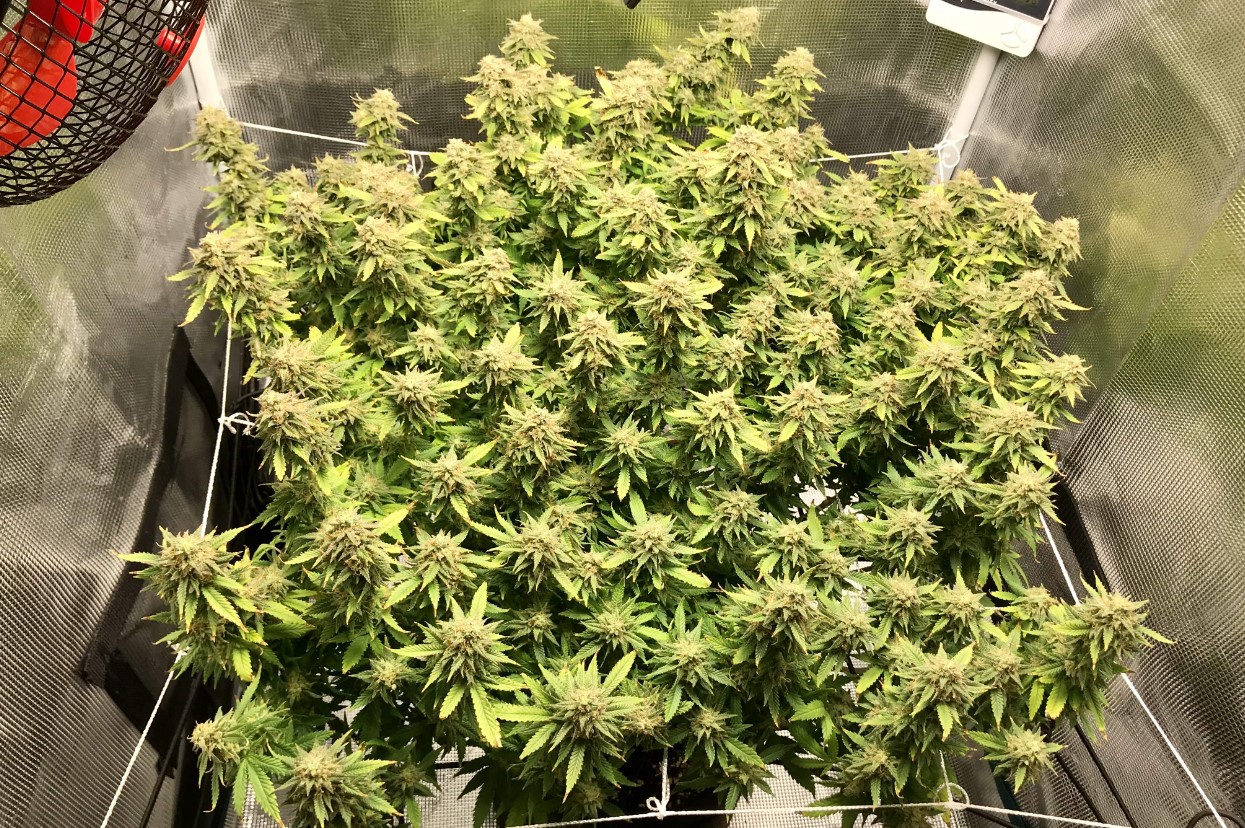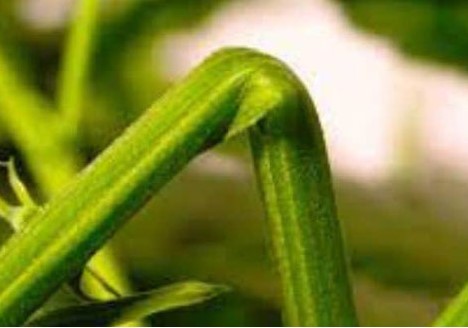Super cropping is the name of a technique that is part of high-stress training (HST). In doing so, the plant is subjected to stress by being slightly injured in some way.
As a result, the plant grows bushier, with more buds and possibly even higher THC levels! This takes advantage of the plant’s natural response, which it also uses to protect itself in the wild if something goes wrong. As a grower, you can use this technique to achieve bigger yields and more potent buds!
What you need for super cropping cannabis
- Your fingers
- A little experience growing cannabis
- Something to tie branches in place – plant ties, twist ties, and regular zip ties all work great, or you can get creative! (Just avoid anything “sharp” like a string that can cut into your plant’s “skin” over time)
- Tape (in case you make a mistake)
- Knowing what to do (what you will learn in this guide)
How to super crop cannabis
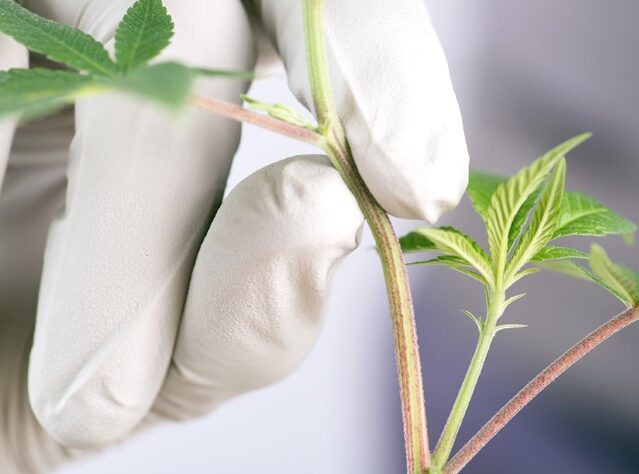
Step 1: Select the branches you want to super crop.
Super cropping is best done during the vegetative phase of the cannabis plant, once the plant has developed lots of healthy branches and is growing vigorously, but before it fully enters the flowering phase.
For super cropping, choose parts of the plant that are old but still pliable. The parts of the plant where you use this technique should still be green and not woody like the underside part of the main stem.
If your plant has multiple main shoots (colas), you should super crop the same spot on all main shoots (colas). If there is only one main shoot (cola), super-crop the pliable greener growth upwards.
Basically, you’re trying to create a flat canopy at the top without any stems sticking out higher than the rest.
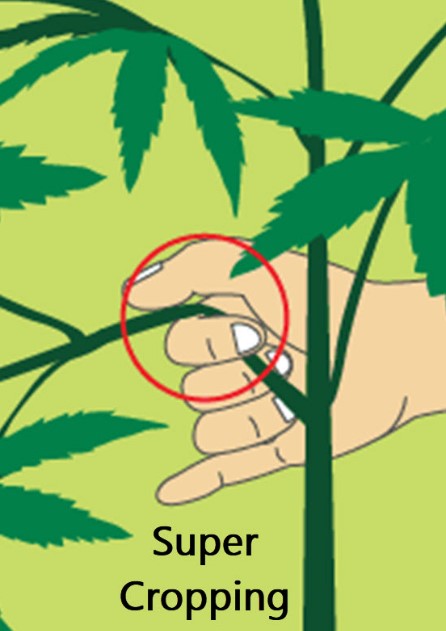
Step 2: Squeeze and bend branches
The idea is to damage the plant’s inner tissues without damaging the outer “skin”. This makes the stem super flexible, making it easy to bend it in the direction you want it to grow.
Grasp the branch and pinch between your thumb and forefinger with firm pressure, as if trying to crush the trunk where you want to bend it. This will help “loosen” the bend you are trying to make.
Slowly wiggle the stem between your fingers for more than 10 seconds while maintaining pressure to loosen it where you want to bend it.
Keep wiggling until it feels like the inside of the stem has softened. The handle should feel pliable and loose at the bend you just made.
Slowly and carefully bend the stem in the desired direction and fasten.
Some growers just grab a branch and snap it off quickly, but doing so makes it more likely that you’ll damage the outer tissue as well and need duct tape.
That being said, cannabis plants are surprisingly resilient. If you don’t bend the stems enough when supper-cropping, they’ll just spring back into place in a couple of hours and set back. You may still need to attach the stems to keep them from growing back up!
You’ll know you’ve made it when the plant now appears a little “broken” and the stems are now resting at a 90-degree angle where you bent them and the branches stay down.
At best, the shaft remains at a permanent 90° angle while the outer tissue remains intact. At this point, you need to secure (tie) the trunk down or it will come back up in just a day or two.
But no matter how you supper crop, this process can result in your plant growing a whole host of new main shoots (colas) and leaves.
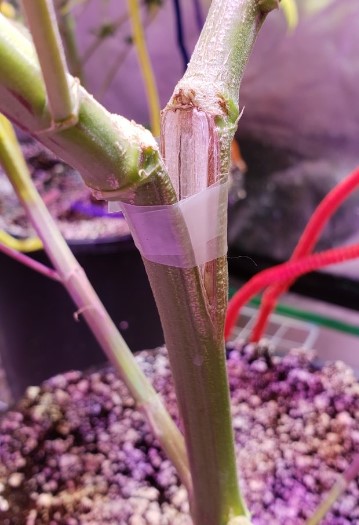
Step 3: Repair and fix any cracks on the outside of the stems
In the best case, you don’t need to do this if the stems aren’t cracked at the bend (breaking point).
If you’ve overdone it a bit, you may need to use heavy-duty tape to reinforce the plant at the bends to allow it to heal properly, especially if you can see an open slit or tear on the outside of the stem.
If there are no cracks, then all you have to do is secure (fasten) the stems (or they’ll snap back up in a day or two). Use plant ties or regular zip ties, both work great!
Regardless, of where you bent/broken, a large “knot” will grow, almost like a permanent bandage, that can carry more water, nutrients, and other goodies than it used to.
Step 4: Remove “bandage” tape
Wait about a week before removing the tape. It is normal for the tissue to show discoloration at the sites of healing.
If the spot is still gray and looks totally wounded, simply reapply the tape until a protective “knuckle” has grown.
Until then, the plant is able to transport nutrients and maintain all normal processes as long as it has the tape as a reinforcement.
If the plant tries to straighten branches, simply tie them up (using low-stress training techniques). Stems will easily yield to your will after being super-cropped.
Result: More flowers, more branches and a shorter, more controlled and bushy plant. Perfect for a grow box, cabinet or stealth growing.
Unlike topping or defoliation, super cropping doesn’t dramatically slow the plant’s growth (although you should expect it to take a little time to recover), while still giving you many of the same benefits as other HST training methods.
Why does super cropping work so well?
Did you know that THC is produced by the cannabis plant for protection?
In the wild, deer and many other animals could eat the flowers of the cannabis plant, which would prevent the plants from setting seeds and multiplying.
But as far as we can tell, most animals won’t be able to eat nearly all of the flowers. They either find that cannabinoids taste awful, or they don’t like the effects. Therefore, we believe the plants use THC to deter predators.
Because this plant uses THC to protect itself from predators, when stressed cannabis plants will ramp up their flower and cannabinoid production as a last-ditch effort to protect themselves.
Why is all this important?
As a cannabis breeder, it’s your job to understand what drives cannabis plants to produce the largest possible, most potent buds.
While cannabis growers want to ensure that plants survive to harvest, keeping them as healthy as possible in a 100% perfect environment without special techniques will not get you the best results.
Instead, the best buds will be produced when you learn to stress plants in the right way to increase yields and cannabinoid production.
This brings us to super cropping, one of the easiest and most effective ways to stress a cannabis plant for better harvests.
This remarkably simple technique will increase yields dramatically, and all you need are your fingers, tape, a bit of growing experience, and knowledge of how it works. It’s based on the idea we just discussed of stressing the plant to stimulate bud and resin production.

